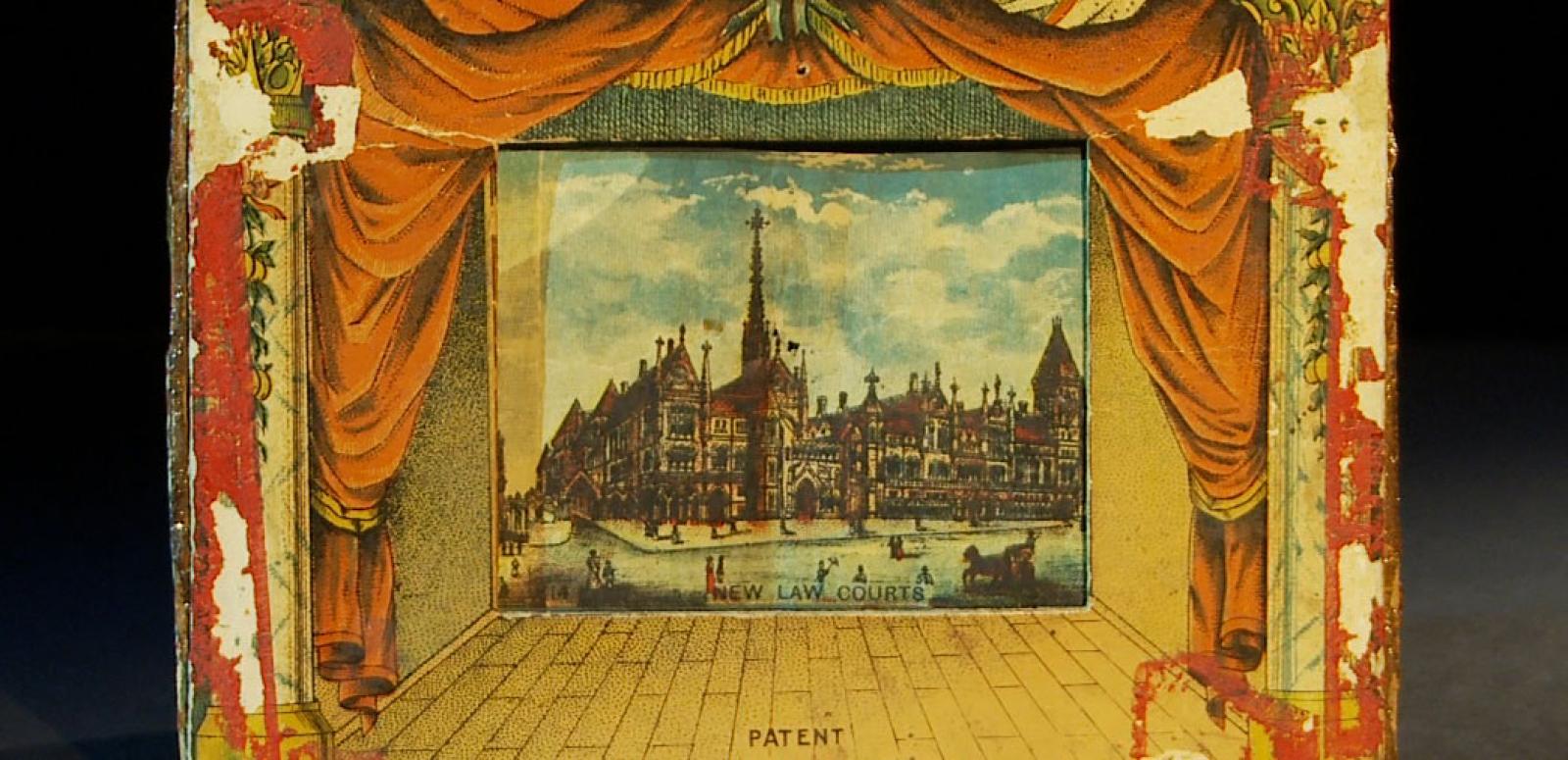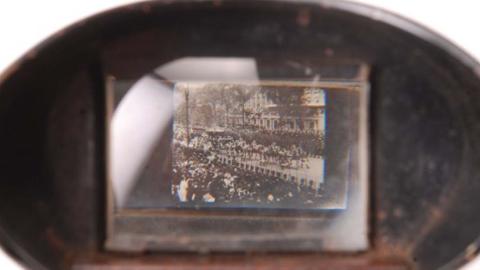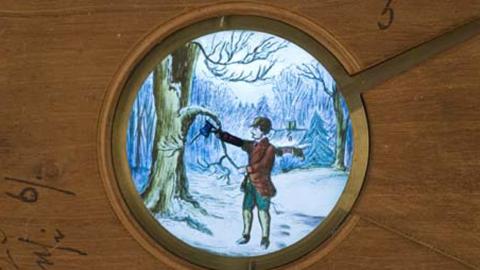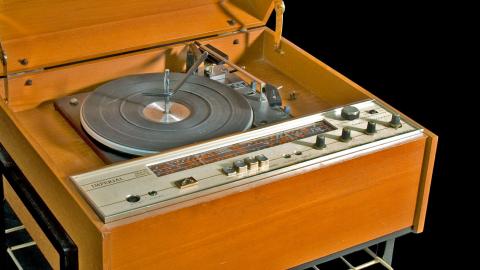

Excursion to London
This charming panorama toy is part of Ray Barnes’ collection of pre-cinema artefacts. Barnes was a discerning collector with a fascination for objects that reveal the early history of the moving screen image. This collection includes gems such as a Zoetrope (NFSA title: 436420), which is a device that produces the illusion of motion from a series of rapidly moving still images, and a W Butchers & Sons Magic Lantern projector known as ‘The Clyde’ (NFSA title: 430826), an early slide projector. There are several children’s toy projectors and this small item stands a little outside of the main collection at first glance. Only when you really look at the object can you understand why it must have appealed to Barnes.
J W. ' Excursion to London’ : Cardboard children’s panorama toy c.1890. NFSA title: 422251
The J W. ‘ Excursion to London’ is a panoramic theatrical toy made from simple materials: cardboard, paper, wood, string, wax and paint. It dates from the late 19th century when toys were intended to educate rather than simply entertain. Toys were expensive luxuries and if parents could afford to buy them they became a prized possession for the whole family. This may be why a fragile and rudimentary looking item such as this has survived the test of time.
From the front, this toy shows a theatrical stage, framed with red curtains. A banner at the top of the stage trumpets the words An Excursion to London and sets the mood for a family’s day in the big town. The picturesque journey takes us to famous London landmarks such as Westminster Abbey, London Bridge, The Tower of London, Big Ben, views of the Thames, the Royal Albert Hall, Buckingham Palace and finally the famous London Zoo. Looking behind the scenes and inside the small little box reveals the inner workings.
A string pulley mechanism moves a printed paper scroll across an opening in the box. This is how the viewer can see London’s famous buildings appearing on stage. The scenic paper images flicker in a lively way because they are illuminated from behind by a wax candle at the centre of the box. The candle’s heat is released through a central port hole located behind the banner head. It’s a simple system; other theatre toys demonstrated exceptional complexity with moving curtains, multiple scenes and special effects, but this one has a certain charm as it’s clearly aiming to represent what we now understand to be an illuminated image on a screen.
We can imagine that a little child’s fingers would find it difficult to move the pulleys and that parents may have rewound the scroll to replay this pictorial journey. This simple toy is as mesmerising as it is beautiful and reveals much about the intimacy of 19th century family life.
Learn more about our Documents and Artefacts collection »
The National Film and Sound Archive of Australia acknowledges Australia’s Aboriginal and Torres Strait Islander peoples as the Traditional Custodians of the land on which we work and live and gives respect to their Elders both past and present.


